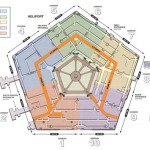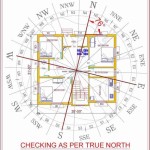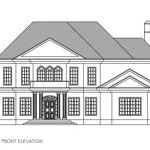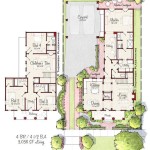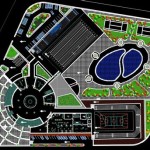30x60 House Plan West Facing 3BHK: Design Considerations and Layout Optimization
Designing a 3BHK house plan for a 30x60 plot with a west-facing orientation presents unique challenges and opportunities. The west-facing aspect typically implies increased exposure to afternoon sun, which can lead to higher indoor temperatures. Careful planning is essential to mitigate heat gain, optimize natural light utilization, and create a comfortable and energy-efficient living space. This article will delve into the key considerations and strategies for designing an effective 30x60 house plan with a west-facing 3BHK configuration.
When planning a 30x60 house, it's crucial to have the design be functional when adhering to standards of Vastu Shastra. The primary goal is to create liveable spaces that feel comfortable, bring in enough light and ventilation, while also protecting from strong afternoon sun through landscaping and design elements.
Orientation and Layout Considerations
Given the west-facing orientation, the layout should prioritize placing service areas like bathrooms, staircases, and storage rooms along the west facade. This acts as a buffer against the intense afternoon sun, reducing heat penetration into living spaces. Living rooms, bedrooms, and kitchens can then be strategically positioned towards the east and north to benefit from morning and diffused sunlight. The south side could be used for a courtyard or open space as a natural heat breaker to the building.
Optimal placement of openings is paramount. Large windows and doors on the west facade are best avoided, or if necessary, should be shaded with deep overhangs, louvers, or landscaping. Smaller, strategically placed windows can provide necessary ventilation without excessive heat gain. Orienting the main entrance towards the north or east, if possible, is generally considered auspicious in many cultures and also aids in utilizing milder light that is not directly shining.
The overall flow of the house is also significant. The living area should be easily accessible from the entrance, creating a welcoming and functional space. The kitchen should be well-ventilated and connected to the dining area for convenience. Bedrooms should ideally be located away from noisy areas to ensure privacy and tranquility.
Space Planning and Room Dimensions
A 30x60 plot offers 1800 square feet of built-up area, which when carefully planned is sufficient for a comfortable 3BHK residence. Efficient space planning is key to maximizing usability. The dimensions of each room must be carefully considered based on the functions that the room would have, and the furniture arrangements.
A typical 3BHK layout might include a living room (approximately 15x18 feet), a dining area (10x12 feet), a kitchen (10x12 feet), and three bedrooms (ranging from 12x12 feet to 14x14 feet each), along with two or three bathrooms. The dimensions provided can be adjusted, depending on the priority.
Circulation spaces, such as corridors and hallways, should be minimized to avoid wasting valuable floor area and add to the perception of spaciousness. Open floor plans, or partially open designs, for the living and dining areas can also enhance the sense of size and improve natural light distribution. The size of the bedrooms should factor in storage requirements. Built-in wardrobes are an efficient way to maximize floor space. The kitchen design should also incorporate ample storage and counter space for efficient cooking and food preparation.
Ventilation and Natural Lighting Strategies
Effective ventilation is crucial for maintaining a comfortable indoor environment, especially in a west-facing house. Cross-ventilation, achieved by placing windows on opposite walls, allows for natural airflow and helps to dissipate heat. The location of windows should take into account prevailing wind directions to maximize ventilation efficiency.
Courtyards can also be a powerful tool for improving ventilation. A centrally located courtyard can draw hot air upwards and out of the building, creating a natural cooling effect. In the south side or adjacent to the West, a courtyard is an excellent method for heat mitigation.
Natural lighting is another important consideration. While minimizing direct sunlight exposure from the west is important, maximizing diffused light is essential for creating a bright and inviting interior. Light-colored walls and ceilings can help to reflect light and brighten up the interior spaces. Skylights can also be used to bring natural light into areas that don't have access to windows, but they should be carefully positioned to avoid direct sunlight exposure during peak hours.
Furthermore, incorporating features such as strategically positioned roof-top ventilators or solar chimneys can help to enhance natural ventilation and reduce reliance on mechanical cooling systems. Also, a central feature of the house being a double height space can help bring air from the lower to the upper floors, and make the entire house climate controlled.
Light wells can also be used to bring natural light into the center of the house. These vertical shafts allow sunlight to penetrate deeper into the building, illuminating interior spaces that might otherwise be dark. Positioning light wells strategically can enhance the overall ambiance of the home.
Material Selection and Energy Efficiency
The choice of building materials plays a significant role in the energy efficiency of a house. Materials with high thermal mass, such as brick or concrete, can help to regulate indoor temperatures by absorbing and releasing heat slowly. However, exterior walls are best insulated to reduce heat transfer.
Reflective roofing materials can also help to reduce heat gain by reflecting sunlight away from the building. Green roofs, which involve covering the roof with vegetation, can provide additional insulation and help to cool the building. Planting trees and shrubs along the west facade can provide shade and reduce the amount of sunlight that reaches the house.
Windows should be double-glazed or triple-glazed to reduce heat transfer. Low-E coatings can also be applied to windows to further reduce heat gain. Proper sealing of windows and doors is essential to prevent air leaks and improve energy efficiency. LED lighting should be used throughout the house to reduce energy consumption.
Vastu Considerations
While modern design emphasizes functionality and aesthetics, Vastu Shastra, the traditional Indian system of architecture, often influences house planning, particularly in India. The compatibility of the house aligns with the natural elements to enhance the well-being of the occupants. Although its scientific validity is debated, many homeowners incorporate Vastu principles into their house design.
Some common Vastu guidelines for a west-facing house include:
- The main entrance should ideally be located in the north-west or west-center of the house.
- The kitchen should be located in the south-east corner of the house.
- Bedrooms should be located in the south-west or north-west corner of the house.
- The living room should be located in the north-east or east corner of the house.
- Avoid placing the main entrance directly in the center of the west facade.
- Keep the north-east corner of the house open and clutter-free.
Integrating Vastu principles into the design can create a harmonious and balanced living environment. However, it's important to prioritize functionality and practicality when making design decisions.
Landscape Design and Outdoor Spaces
Landscaping plays a crucial role in mitigating the effects of the west-facing orientation. Trees, shrubs, and vines planted along the west facade can provide shade and reduce the amount of sunlight that reaches the house. Deciduous trees are particularly effective as they provide shade in the summer and allow sunlight through in the winter.
A well-designed outdoor space can also enhance the living experience. A covered patio or veranda on the east or north side of the house can provide a comfortable space for outdoor dining and relaxation. A small garden or lawn can also add beauty and tranquility to the property.
Water features, such as fountains or ponds, can help to cool the air and create a more pleasant outdoor environment. Integrating these features thoughtfully into the landscape design can greatly improve the livability of the property.
The front yard should be carefully landscaped to enhance the curb appeal of the house. A well-maintained lawn, colorful flowers, and attractive shrubs can create a welcoming and inviting entrance.
Interior Design and Finishes
The interior design and finishes can also contribute to the overall comfort and energy efficiency of the house. Light-colored walls and ceilings can help to reflect light and brighten up the interior spaces. Use of lighter colors would contribute to the overall visual appeal as well.
Flooring materials should be chosen for their comfort and durability. Tile or stone are good choices for areas that are prone to moisture, such as bathrooms and kitchens. Wood flooring is a classic choice for living rooms and bedrooms. Carpets can add warmth and comfort to bedrooms, but they should be chosen carefully to avoid trapping dust and allergens.
Window coverings, such as blinds, curtains, or shades, can be used to control the amount of sunlight that enters the house. Blackout curtains are particularly effective at blocking out sunlight and reducing heat gain. Furniture should be chosen for its comfort and style. Consider the size and layout of the rooms when selecting furniture to ensure that the spaces are not overcrowded.
Integrating energy-efficient appliances and fixtures can further reduce energy consumption. Look for appliances with high energy star ratings and fixtures with low-flow water consumption.
The interior of the house should reflect the personal style and preferences of the occupants. Adding personal touches, such as artwork, photographs, and decorative items, can create a warm and inviting living environment.

30 60 Modern Duplex Villa 1800 Sqft West Facing House Plan 3bhk Bungalow Morden Elevation

1800 Sq Ft House Plan 3bhk Best 30 60 West Facing

30 By 60 House Design Best 800 Sqft 3bhk With Car Parking

30 X 60 House Plan 3bhk With Car Parking

P497 Residential Project For Mr Jafar Ji Chittorgarh Rajasthan West Facing House Plan With Modern Elevation 30 X60 1800 Sqft

30x60 1800 Sqft Duplex House Plan 2 Bhk West Facing Floor With Vastu Popular 3d Plans Lucknow

30 By 60 House Plans West Facing Plan 3bhk Rd Design

30x60 House Plan 2bhk West Facing With Car Parking Designs And Plans Books

30 X 60 West Face 3 Bhk House Plan Explain In Hindi

30x60 House Plan 30 60 Design 2bhk Houzy In

